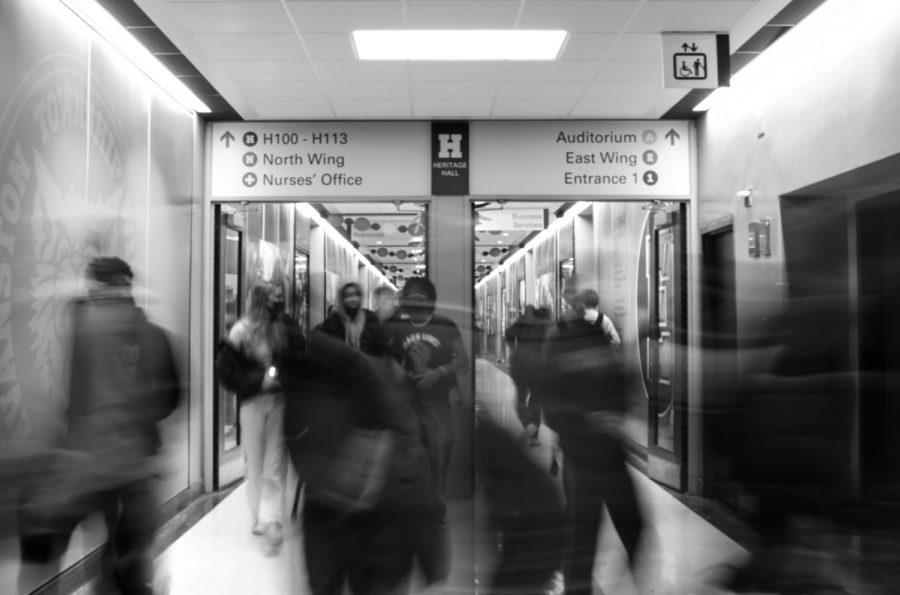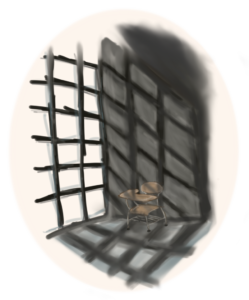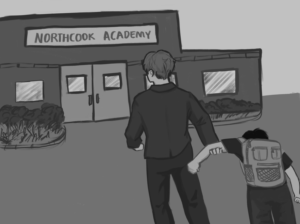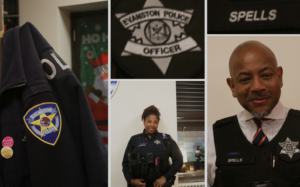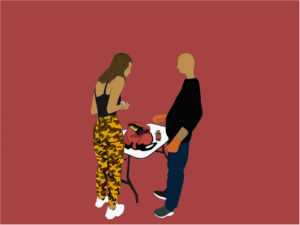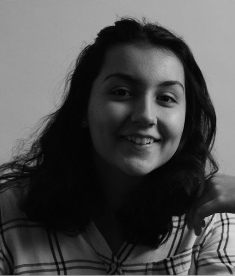Every aspect of the word: Safety at ETHS, a year after lockdown
Every day, over 3,400 students stream into ETHS.
December 16, 2022
A year ago today, ETHS went on hard lockdown. It started midway through first period with a code white, or a soft lockdown— students were already tense with COVID-19 cases spiking and the semester about to end. Soon, the school was buzzing with confusion and speculation.
The next period, the loudspeaker’s chimed yet again, and then-Superintendent Dr. Eric Witherspoon announced a code red, also known as a hard lockdown, in which everyone in the building was instructed to hide wherever they were until given the all clear. Students were given little information for hours, and rumors spread about a possible school shooting.
Two and a half hours later, when the all clear was finally given and Witherspoon shared what had happened, two students found with guns, emotions remained high.
“It was just fear the entire time,” senior Alice Lavan shared at the time. “I think, at a certain point, I was just so overwhelmed and anxious, and the emotions had just built up so much that any good news wasn’t really going to make me feel better.”
Eleven months later, in November, ETHS students and families received a “Community Notice” via email. It explained that a student had brought a loaded gun to school that day, and that there was “no knowledge of any threat or any danger to staff or students.”
The next morning, students heard that same loudspeaker chime, and Dr. Marcus Campbell, the current superintendent, addressed not only the events of the day prior but also mounting concerns throughout the community about how to make ETHS safe.
“I want to be clear about a goal of ours, and hopefully all of us will share this: let’s keep weapons out of ETHS. I don’t want metal detectors. I don’t like what they mean; I don’t like what they would make the school feel like. Logistically, they’re a mess to implement. There are many, many problems with [them]. And when we have measures like that, it compromises all of our humanity. I trust you to make the right choice not to bring weapons to school. But if we continue to find them, we’re going to have to find ways to keep them technically out of ETHS.”
In the space between these two announcements, the discourse on safety—in both schools and the broader community—has shifted in many ways. Campbell’s first day as the district superintendent was July 5, the day after a mass shooting at the Highland Park parade. One of his first actions as the superintendent was expressing sympathy for those lost. Last year, a shooting at the Mobil on Green Bay Road left five teenagers shot, one of which died. More recently, at the McDonalds only a block away from ETHS, shots were fired after school. These are only a few of the gun-related incidents in and around the Evanston community.
Simultaneously, ETHS has been grappling with the relationship between safety and discipline. After COVID-19, the school reworked policies to allow leniency as students readjusted to in person education. But this year, the school administration has reversed many of those rules and put in place policies aimed at what many on the administrative team have referred to as ‘loving accountability,’ with the aim of increasing student academic success. However, many students have focused less on the rationale behind these policies and more on the consequences. From policies barring phones from classrooms to stricter rules around lunch and tardies, students have expressed feeling more controlled and more surveilled.
While students are having those conversations, the discussions among the adult community around ETHS are often focused on a different set of issues. At the Nov. 14 school board meeting, staff members communicated a problem with ‘in-school truants,’ a term for students who are showing up to school every day but not attending class. Administrators and teachers are working to help support students who struggled during online learning while also making adjustments to make the school physically safer.
Just last week, Principal Taya Kinzie sent home an email to students and families that listed out the changes that have been made, while also adding that the school will “continue to look at layers of deterrence. This includes sophisticated weapons detection systems that can maximize both our wellbeing and our humanity.”
As the school negotiates how to make itself physically safe and support academic success, there is the question of who historically has felt safe at ETHS. According to the 5Essentials survey, a yearly survey schools distribute to determine how well they are doing across five core elements of the school experience as determined by researchers at the University of Chicago, Black students at ETHS have reported feeling the most unsafe at school out of any racial group the survey accounts for over the last four years. Black ETHS students’ responses to questions about safety in and around school yielded a score of 36 from 5Essentials, compared to white ETHS students’ score of 45. To put it clearly, over the last four years, Black students have consistently reported feeling the least safe out of any racial group at ETHS.
It is a year to the day of ETHS’ hard lockdown. Heading into 2023 and beyond, the school’s efforts to protect students’ physical safety may be in tension with supporting the emotional safety of its most marginalized students. As a community, we are living through a moment where we are forced to reexamine our personal relationship with safety and ask ourselves what we need to do to make our school and community safe in every aspect of the word.
In this issue, each story will examine one aspect of safety in Evanston or ETHS. Each piece can stand on its own, but we’ve created this set of stories as a whole to illustrate our attempt at a nuanced, in-depth portrait of safety in our community. We’ve placed pieces about the connections created between safety officers and students next to articles about the way that safety presence can create discomfort for many, and pieces about ETHS setting the stage for positive change next to critiques of its policies. We hope that you take the time to read as many of these pieces as possible, identify the broader trends and tensions that exist and consider the vision of this community that we have presented you with alongside your own views and experiences.


